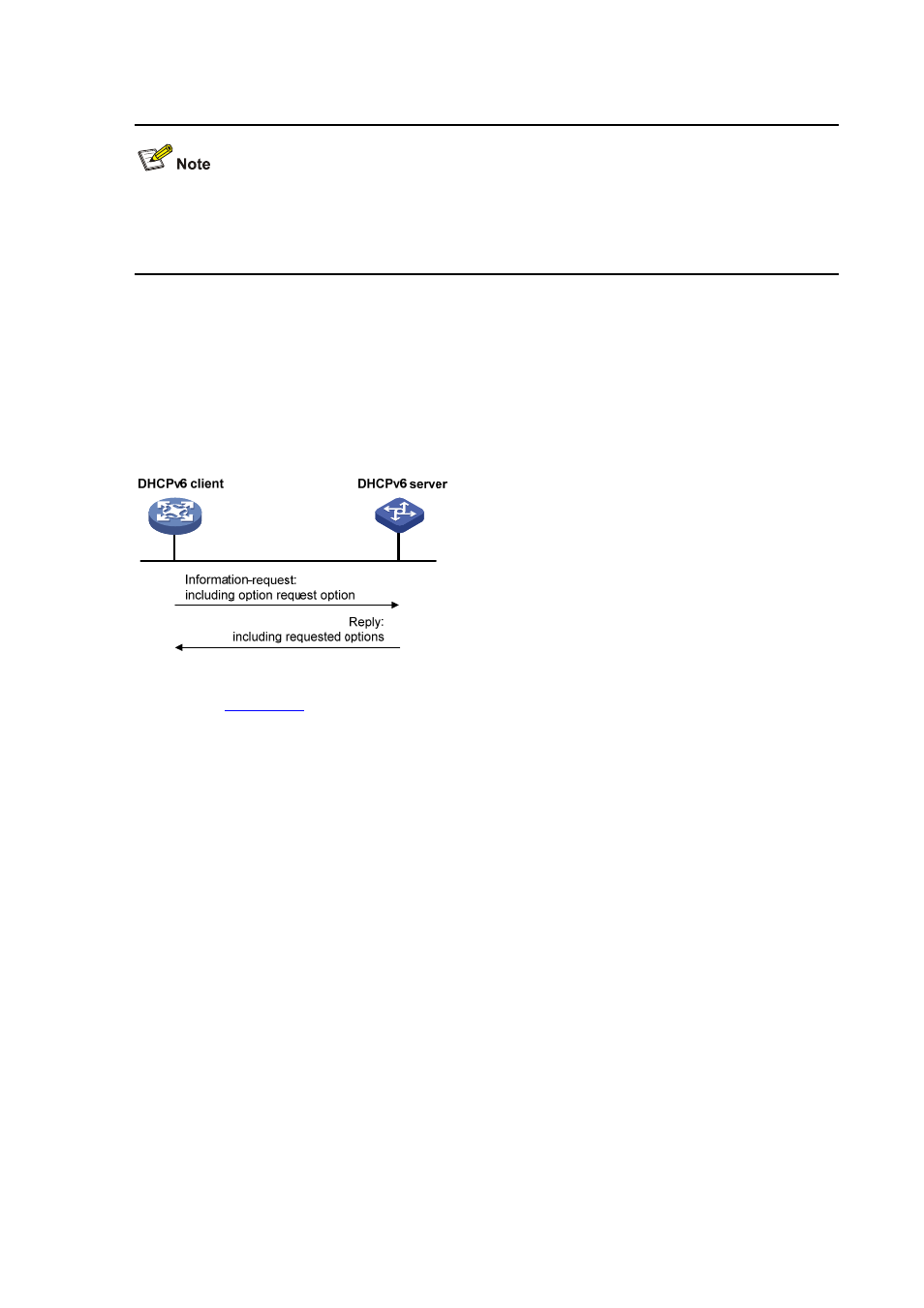Operation of dhcpv6 relay agent – H3C Technologies H3C S7500E Series Switches User Manual
Page 150

14-3
Stateless address autoconfiguration means that a node automatically generates an IPv6 address
based on the information obtained through router/prefix discovery. For details, refer to IPv6 Basics
Configuration in the Layer 3 - IP Services Configuration Guide.
With an IPv6 address obtained through stateless address autoconfiguration, a device automatically
enables the stateless DHCPv6 function after it receives an RA message with the managed address
configuration flag (“M” flag) set to 0 and with the other stateful configuration flag (“O” flag) set to 1.
Two types of messages are exchanged in the operation of stateless DHCPv6: the information request
message sent by the client and the reply message sent by the server.
Figure 14-3 Operation of Stateless DHCPv6
As shown in
, stateless DHCPv6 operates as follows:
1) The DHCPv6 client multicasts an information request message to the destination address
FF02::1:2. The information request message contains the option request option, specifying
configuration parameters that the client requests from the DHCPv6 server.
2) After receiving the information request message, the DHCPv6 server returns a reply message
containing the requested configuration parameters to the client.
3) The client checks the reply message. If the obtained configuration parameters match those
requested in the information request message, the client performs network configuration with the
parameters. If multiple replies are received, the first received reply will be used.
Operation of DHCPv6 Relay Agent
A DHCPv6 relay agent and DHCPv6 server exchange two types of messages, Relay-forward and
Relay-reply.